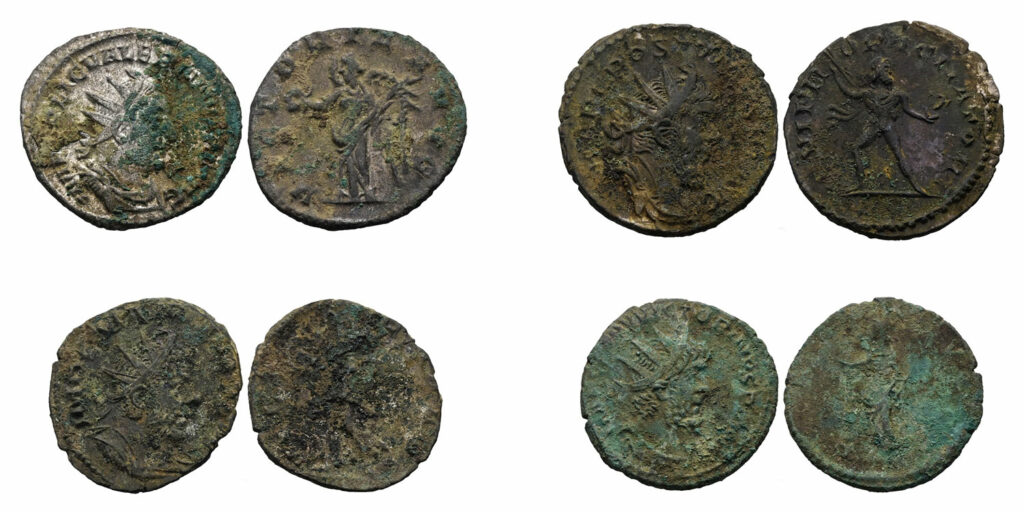- Get link
- X
- Other Apps
- Get link
- X
- Other Apps

Nearly 3,000 coins, along with over 200 unidentified silver fragments decorated with geometric designs, have been discovered by a metal detectorist in the Westerwald mountain range, an area located outside the Roman Empire and beyond known settlements of ancient Germanic tribes. The coins were hidden in a ceramic pot, placed between two rocks, suggesting they were intentionally buried.
Most of the coins found are Antoniniani, a type of silver coin that was in circulation during the third century A.D. These coins were primarily made of bronze with a thin silver overlay. Timo Lang from the Office of State Archaeology in Rhineland-Palatinate explained that most of the coins feature images of Roman or Gallic emperors. The Gallic Empire, which existed from A.D. 260 to 274, was a breakaway entity from Rome that ruled over modern-day France, Belgium, Spain, and parts of Germany and Italy.
The coins date from the reign of Roman Emperor Gordianus III (A.D. 238-244) to Gallic Emperor Victorinus (A.D. 269-271). While some of the coins were minted in Rome, the majority were produced in Cologne, which was part of the Gallic Empire at the time. Lang speculates that the hoard was likely buried in the early 270s, possibly during the turbulent period of the Gallic Empire’s decline.
This discovery offers a glimpse into the economic and political landscape of the time, with significant connections to both the Roman and Gallic Empires. It also raises intriguing questions about the motivations behind hiding the coins in this remote location. What do you think could have led to the decision to hide such a large hoard in the wilderness, far from any known settlements?
- Get link
- X
- Other Apps